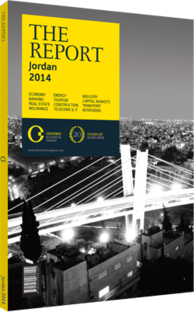A number of Jordan’s key economic indicators have improved over the last year and GDP is forecast to grow by 3.5% in 2014. Jordan’s reliance on energy imports is being addressed with increased focus on domestic oil shale reserves and nuclear energy, while plans to build a pipeline through the country from Iraq will provide a stable oil supply at discounted rates. Jordan’s expanding population has put pressure on state services, particularly health, where the private sector is expected to play an increasingly prominent role.
Tourism revenues rose in 2014 and, with the unveiling of a new arrivals terminal at Aqaba International Airport and plans for a national rail network, these are expected to rise further in the coming years. All in all, continued political stability, large scale transportation developments, the availability of a young, educated workforce and government efforts to reduce the fiscal deficit and the country’s reliance on energy imports should ensure Jordan maintains its strong position in the region.












